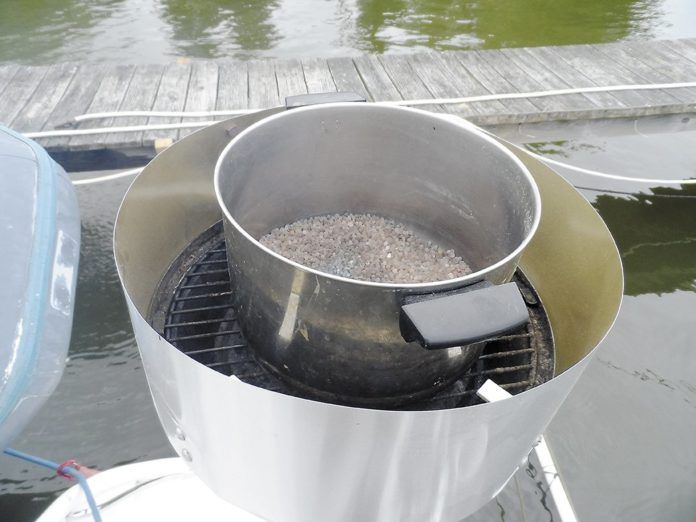In this months issue of Practical Sailor magazine we look at the effectiveness of sealed bags designed to prevent corrosion of onboard spare parts and electronics while they are stored (see No Rust Bags? A Bit of A Bust, Practical Sailor, September 2019). As one of the controls for that test we included silica gel beads, a versatile desiccan’t that has proven its worth in various onboard applications.
A few years back, we introduced fuel tank vent filters as a simple step toward drier fuel (see PS, January 2013, EPA Mandate Sparks Fuel-vent Filter Test and PS January 2014 Diesel Tank Vent Filters). The caveat was that eventually the silica gel resin used in these filters would need regeneration.

We wish the silica gel drying filters could be as maintenance-free as the carbon canister on your car, but our simple DIY silica gel filters (as well as those made by various marine manufacturers) don’t have programmed regeneration cycles like the automotive carbon canisters. The makers of silica gel fuel filters say the silica gel resin should be replaced annually, but Practical Sailor testers have found that three years is about right for diesel and five years for E-10 gasoline.
At that point, the gel turns from blue to pink as it becomes saturated with water, and regeneration with heat is needed. Note that some pink in the filter is fine; it is only when it becomes nearly all pink that the filter is spent.
The rejuvenating process is as simple as dumping the resin in a pan and heating over a low flame while stirring periodically. To avoid overheating the resin, the flame should regulated such that the process takes about 20-30 minutes.
Although we regenerated the resin for this gasoline vent filter on grill, other testers actually used galley stoves and reported no noticeable odor in the cabin. Practical Sailor recommends the outdoor grill, just to be safe.
If your filter material is wet or contaminated with fuel, you should revise your installation, either by moving it to a higher location, or adding a cover to prevent water ingress. These beads can be rinsed, dried and reused. After heating, let cool and you are good for another three to five years.




































